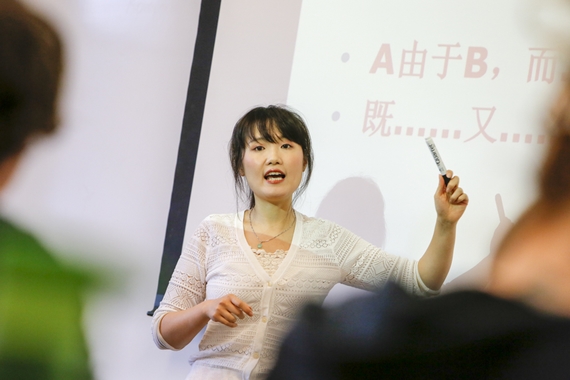Drumming to Find a Voice
Japanese Taiko Drumming is the quintessential combination of martial arts, dance, and percussion, but for Roy and PJ Hirabayashi, it is much more than that.
Taiko gives this married couple a sense of identity and serves as the form of self-expression for which they had been searching during the civil rights era. In February, they visited the University of Minnesota to share their perspectives and their love for Taiko, bringing an interdisciplinary learning experience to the Twin Cities.
Taiko in the United States
The Department of Asian Languages and Literatures, the Program in Asian American Studies, and the School of Music collaborated to bring Roy and PJ Hirabayashi to campus to speak to issues of race, politics, and creative expression. Additional support for the event was provided by the local nonprofit TaikoArts Midwest.
The Hirabayashis pioneered the Taiko movement on the west coast of the US. The Taiko drum was originally used for religious ceremonies and festivals in Japan. Over time, it has evolved into an ensemble performance artform and made its way to the United States in the late 1960s. The Hirabayashis are pioneers of that Taiko movement; they founded San Jose Taiko in 1973, the third Taiko group in America. The group started through the San Jose Buddhist Church, originally as a means for young people to engage with the church. However, it quickly grew from a youth activity to a full community activity because many desired to participate. They are now a professional group with a resume of performances that span from a Golden State Warriors game to the historic Carnegie Hall.
In 2011, the Hirabayashis received the National Endowment for the Arts (NEA) National Heritage Fellowship Award. This award is given out annually in recognition of lifetime achievement in folk or traditional arts. The award not only meant a lot to the Hirabayashis, but it also validated Taiko as an artform in the United States. “It has always been a struggle to explain to people who we are as an artform,” Roy explains. “For the NEA to recognize us like that confirmed that our artform was becoming legitimate.”
Civil Rights
The early 1970s were a complicated time for the Hirabayashis. They are third-generation Japanese Americans and post-WWII baby boomers. In college they were active in the political movements of the time, such as the anti-war and civil rights movements. They desired to learn more about who they are as Japanese Americans. Starting a Taiko group gave them an identity and a voice. “Latinos have Latin music, the African community has R&B and soul music… Asians don’t really have any music that is unique to us,” Roy says. “Taiko became that voice for me.”
PJ recalls her experience growing up as a Japanese American. In the aftermath of World War II, she was harassed by her predominantly white classmates. “Growing up, I didn’t know who I was. I didn’t want to be in a Japanese body,” she says. “I was ostracized and bullied. I was considered the Japanese enemy.” Her parents, who were among the thousands of Japanese Americans incarcerated in internment camps during the war, insisted she should be a good student and not bring attention to herself. She, like Roy, was looking for a sense of identity and a form of self-expression, and she found that through Taiko. “The classical Japanese traditions of flower arranging, tea ceremonies, and classical dancing didn’t speak to me,” she laughs. “Taiko spoke to me.”
Sharing Their Experiences
Their day at the University of Minnesota began with a clinic for the School of Music’s Symphonic Band. The music students watched a demonstration of Taiko and partook in group exercises that demonstrated the principles of Taiko drumming and trained students how they can apply that energy and attitude to their everyday lives.
In the evening, the Hirabayashis delivered a presentation that was open to the general public about the history of San Jose Taiko within the context of the political turmoil at the time the group was founded. The event concluded with the performance of original Taiko pieces by Roy and PJ. “The Hirabayashis’ smiles and quiet but persistent voices show that we can follow a positive path to achieve our goals,” says Dr. Michiko Buchanan, director of the Japanese language program and a Taiko drummer. “Their cheerful and strong Taiko sound truly reached our hearts.”
This story was written by an undergraduate student account executive in CLAgency. Meet the team.


